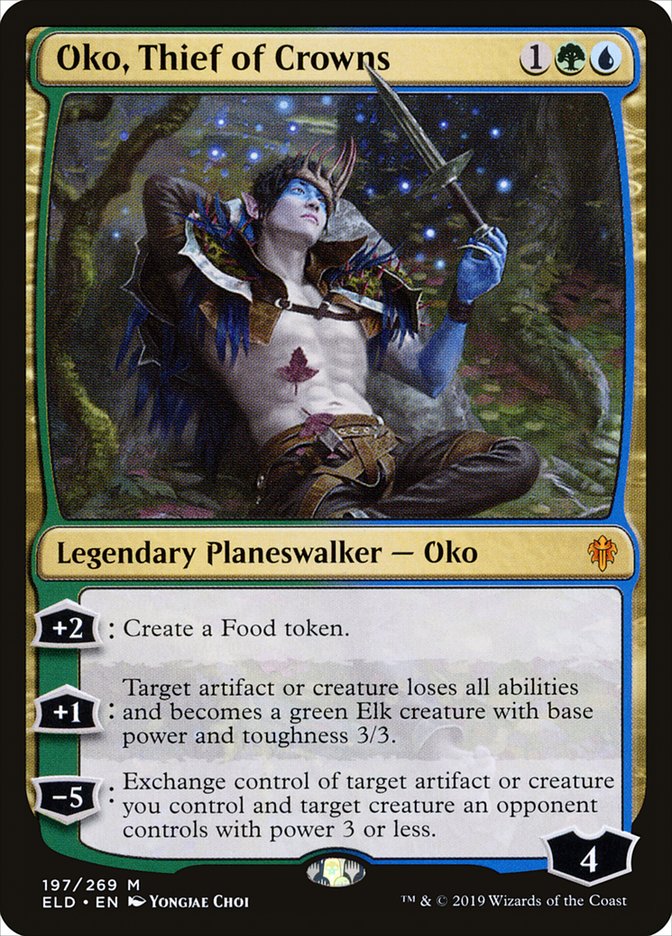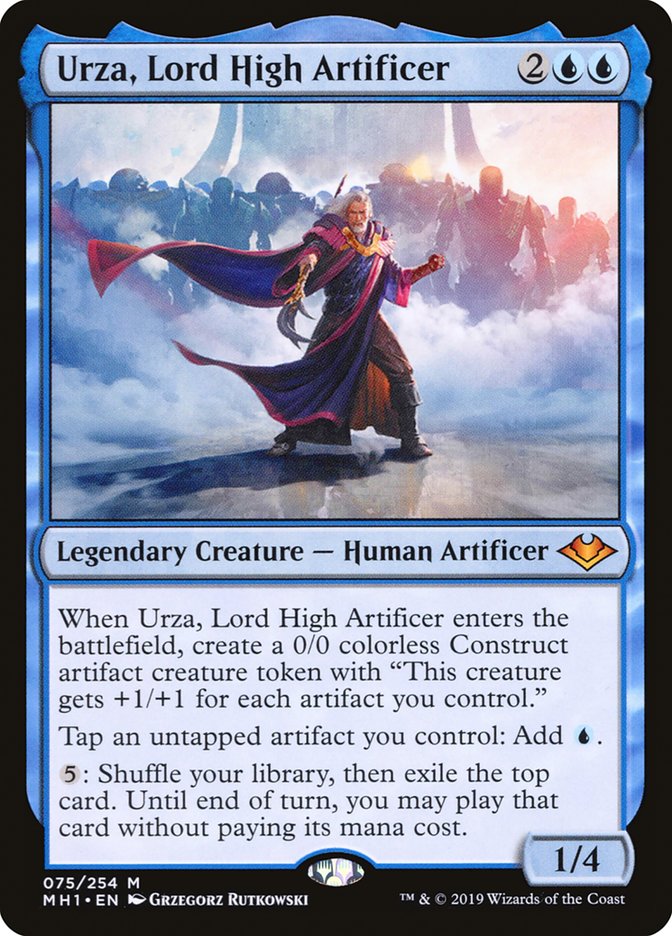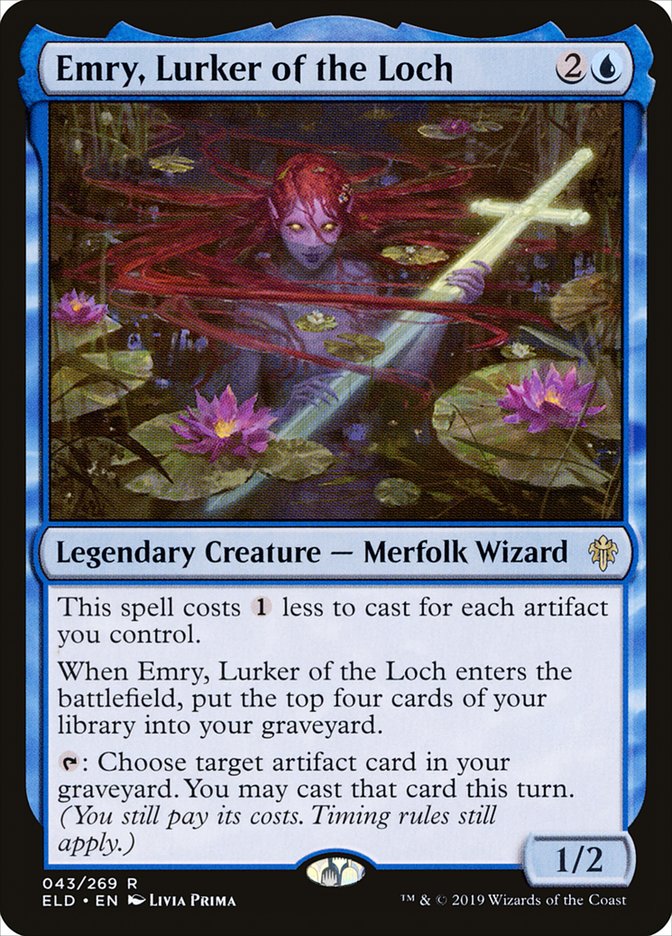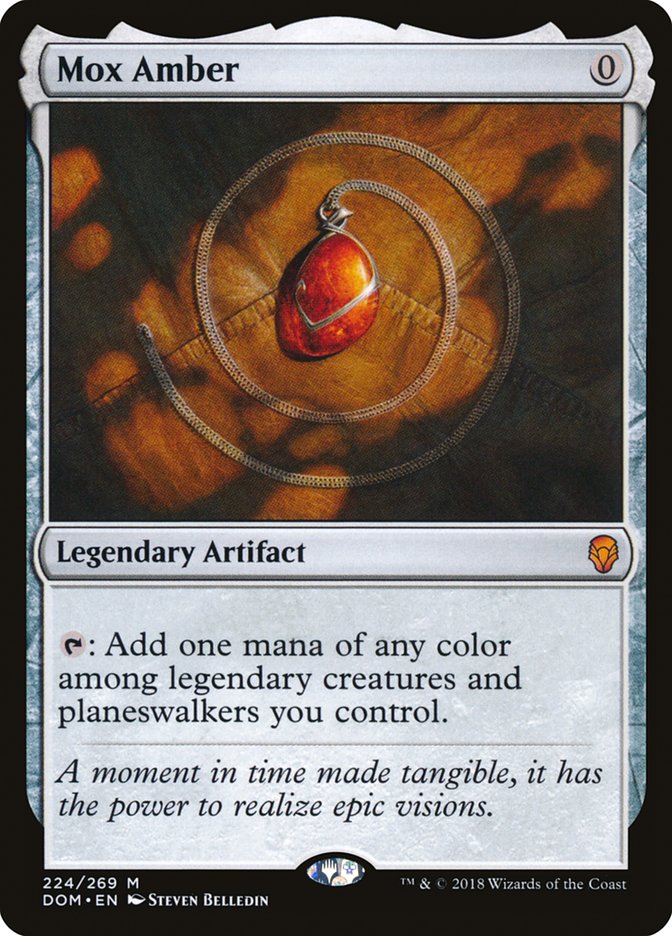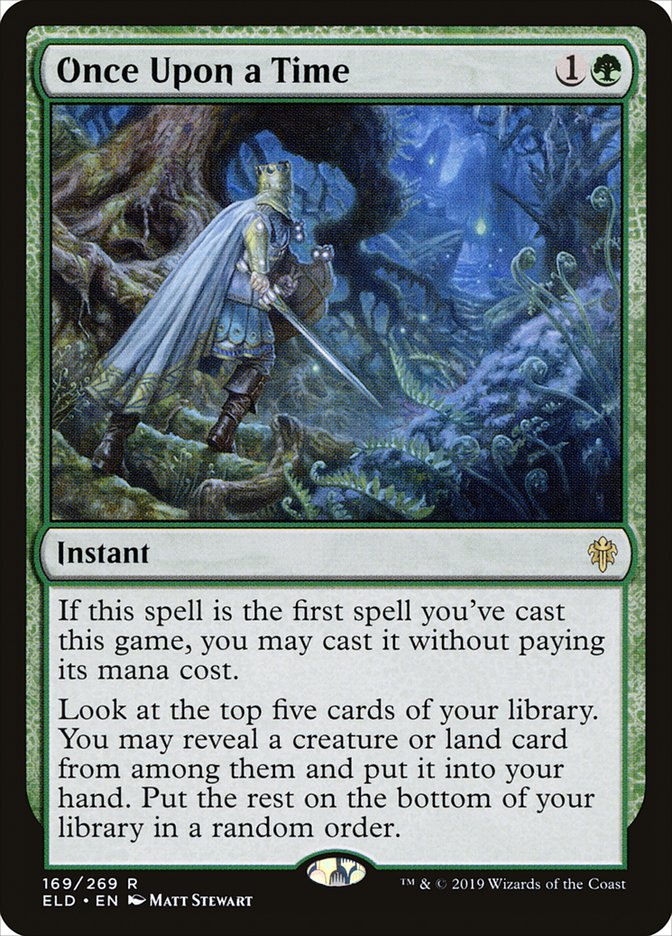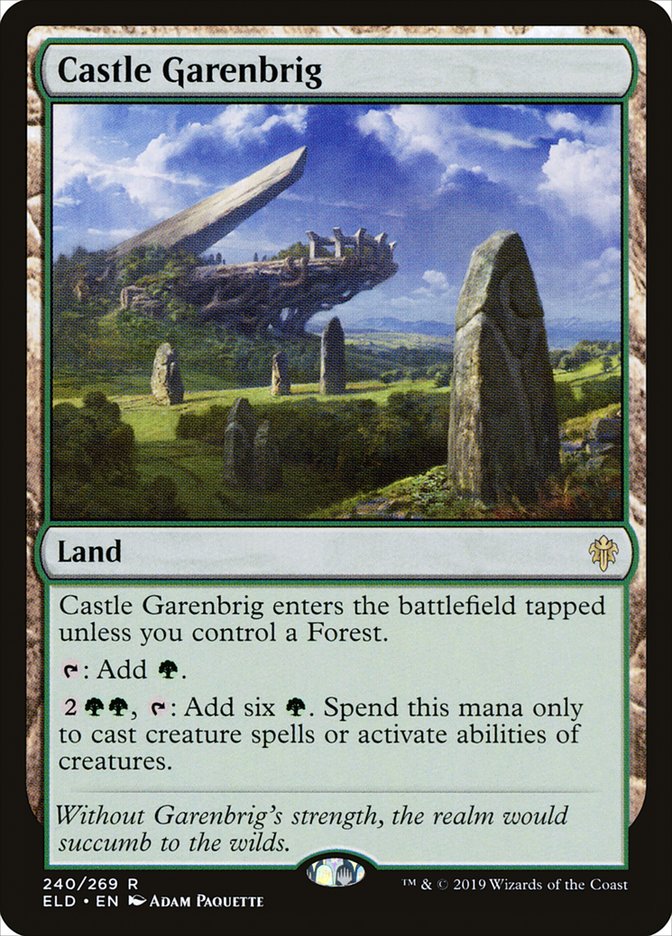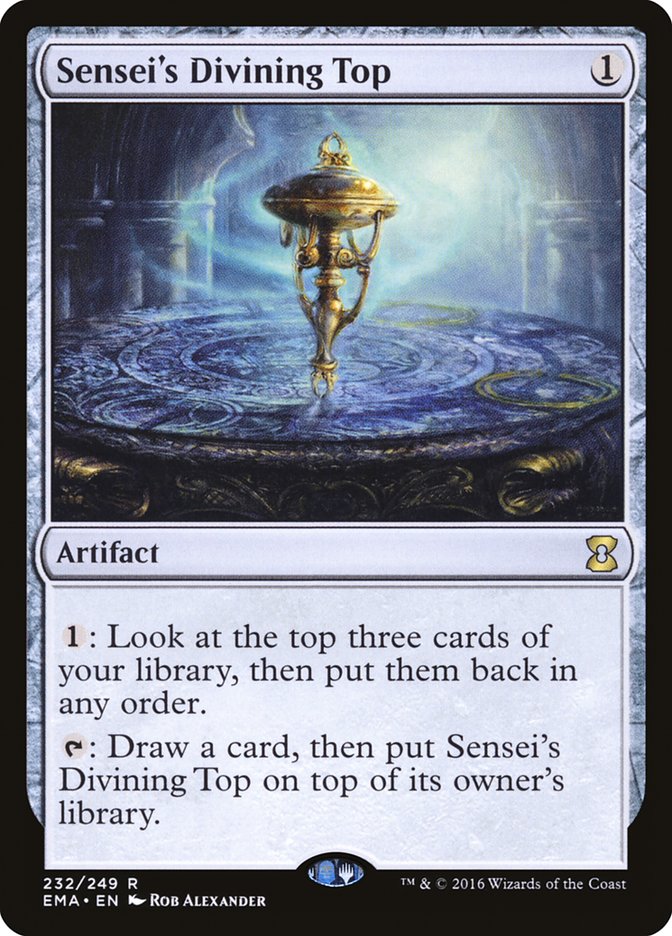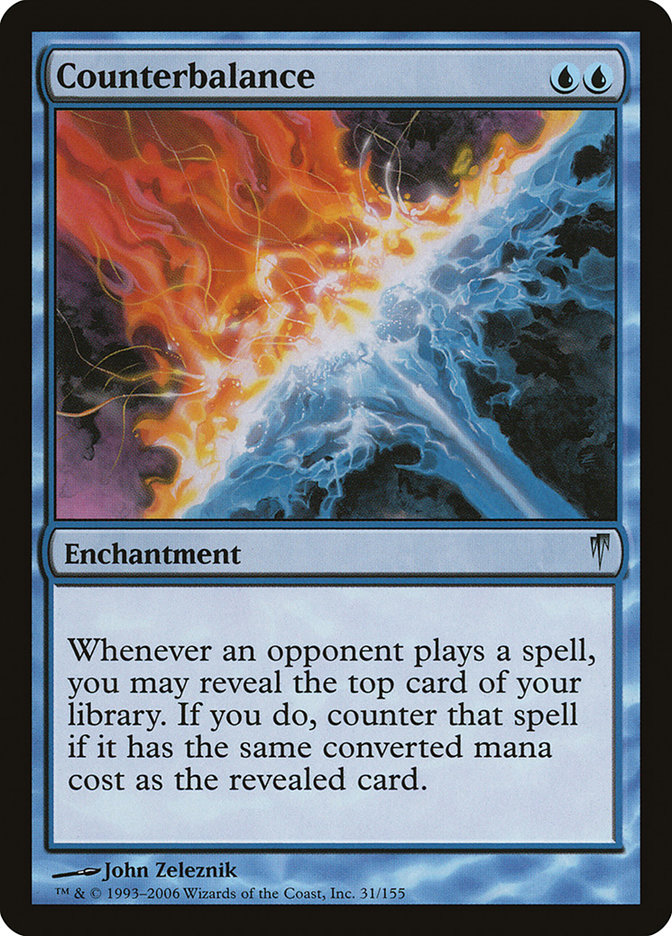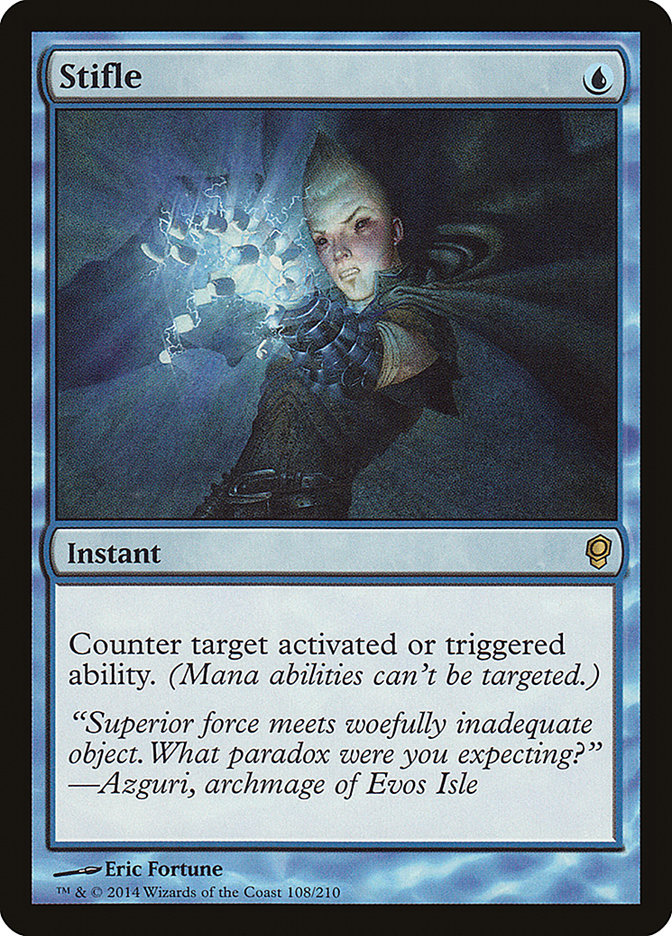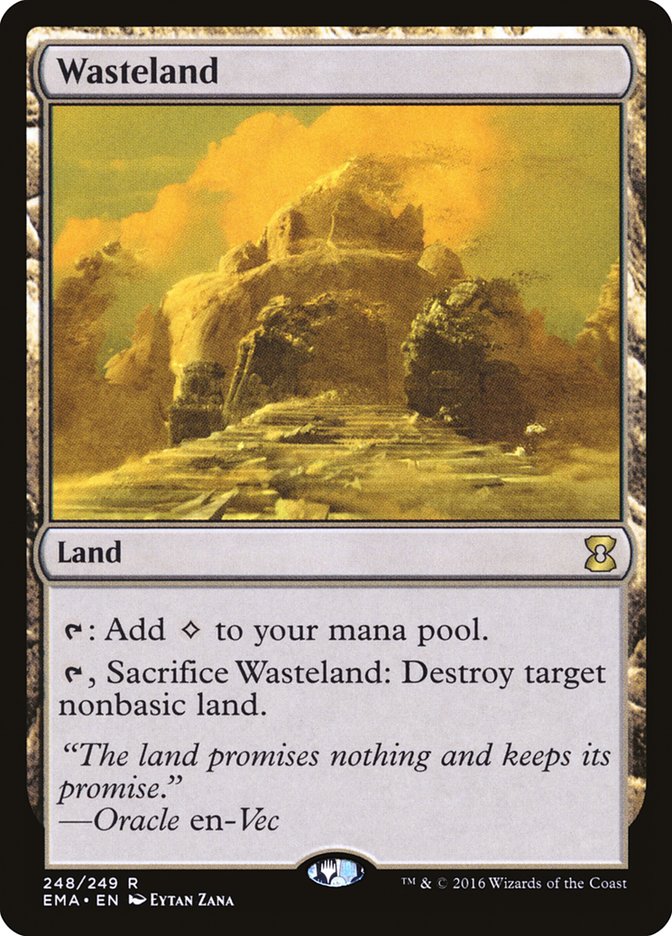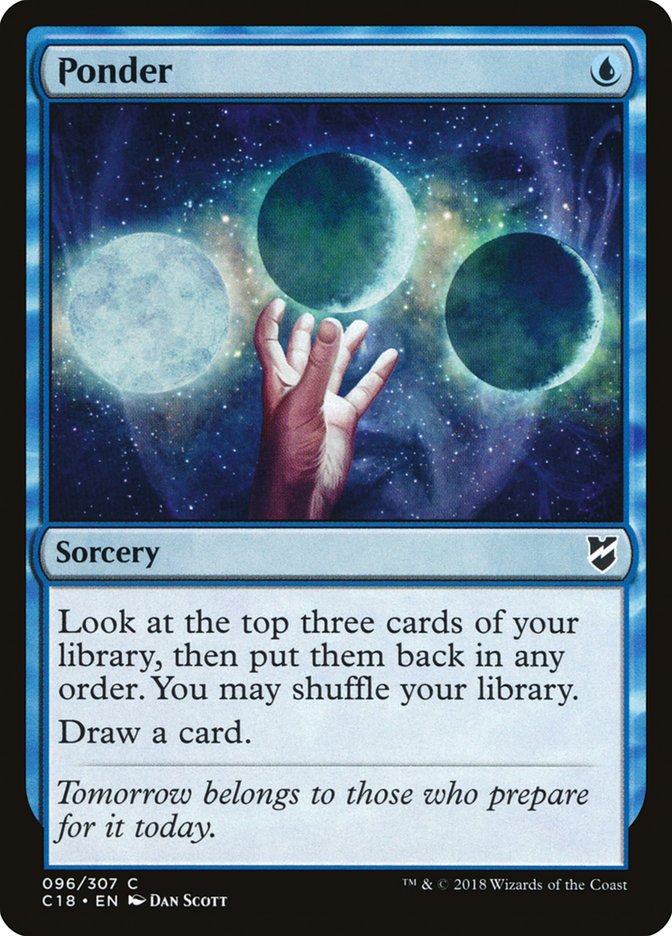Standard is broken. Modern is super-broken. Legacy? Oh, Legacy is definitely broken. There’s no question for the serious player when it comes to the best deck in each format, which is a rarity in contemporary Magic.
Let’s break down where we’ve been, where we are, and where we’re going.
Standard
Golos, Tireless Pilgrim and Field of the Dead have conspired to master the format. This ramp deck is packed with high-quality cards and incredible inevitability, and now that the rest of the format has been so thoroughly powered down thanks to the recent rotation, it’s going to be a slog trying to get through this powerful archetype.
But even within the Golos / Field of the Dead cluster, there are three distinct sub-archetypes, each with their own flavor, and a few key tweaks do exist to try to gain an edge.
Bant Golos
The winner, Jonathan Rosum:
Creatures (18)
- 4 Hydroid Krasis
- 2 Arboreal Grazer
- 4 Golos, Tireless Pilgrim
- 3 Beanstalk Giant
- 1 Kenrith, the Returned King
- 3 Realm-Cloaked Giant
- 1 Fae of Wishes
Planeswalkers (3)
Lands (23)
Spells (16)

What’s the basic strategy here? Ramp a bit; sweep the leg with a Cast Off from Realm-Cloaked Giant; draw some cards with Hydroid Krasis; ramp some more with Circuitous Route and Golos, Tireless Pilgrim; start churning through the deck with the activated ability on Golos; and eventually win with a giant swarm of Zombies.
If the Zombies don’t work, a massive Hydroid Krasis can always do the trick. Or, if that’s not enough, Realm-Cloaked Giant and Beanstalk Giant also beat down.
But if the game goes really long, there’s one pretty sweet alternative. Fae of Wishes can get a Jace, Wielder of Mysteries. Mirror matches go so long that it’s not inconceivable to win by running out of cards and winning with the unique planeswalker.
Another alternative is using Agent of Treachery to steal opposing lands and outmuscle the opponent on the Zombie front. It’s not terribly hard to recur Agent of Treachery via a Teferi, Time Raveler activation. Now that’s powerful Magic.
Generally speaking, though, the most common way to win a Golos mirror involves gathering a few healthy-sized Giants, clearing out all the Zombies with a Cast Off, and swinging for the fences with the Giants that survive the sweeper.
Balancing cards, Zombies, Giants, and mana is a tall order, but long, intricate games can be fun! Just not if they go to time every round.
Golos Fires
The runner-up, Jeremy Bertarioni:
Creatures (16)
- 3 Hydroid Krasis
- 4 Golos, Tireless Pilgrim
- 3 Beanstalk Giant
- 2 Kenrith, the Returned King
- 4 Fae of Wishes
Lands (22)
Spells (22)

Now this deck is wild! With the ultra-powerful Fires of Invention, Golos can just leapfrog ahead in development on the fifth and sixth turns, freely using Fae of Wishes to pull insane planeswalkers out of the sideboard. This means that Chandra, Awakened Inferno is extremely accessible and can start pumping out wins before traditional Golos players actually get their bearings and start using their namesake card.
Fires of Invention and Fae of Wishes make dreams come true. They form an absolutely unfathomable way to bend almost every traditional rule of competitive Magic, and grafting it onto the Bant Golos deck is somewhere between genius and madness. I hate it, yet I can’t help but love it. Kudos to the Lotus Box squad and their innovation.
Sultai Golos
The outlier, Zach Allen:
Creatures (17)
- 3 Hydroid Krasis
- 2 Arboreal Grazer
- 4 Risen Reef
- 4 Golos, Tireless Pilgrim
- 2 Yarok, the Desecrated
- 2 Agent of Treachery
Lands (25)
Spells (18)

Eschewing the Bant shell and the important Realm-Cloaked Giant, Zach Allen chose to go with Find // Finality, Risen Reef, and the spicy Yarok, the Desecrated, which doesn’t sound like a bad bet. After all, Yarok with Field of the Dead is a lot of Zombies. And Risen Reef is an excellent way to keep the velocity going, churning through the deck and incidentally ramping along the way. If there’s a Yarok on the battlefield with a Risen Reef and an active Field of the Dead, a newly cast Risen Reef will net four enters-the-battlefield triggers, and each one that hits a land will trigger Field of the Dead twice. Heaven forbid one of them hits a second Field of the Dead!
I don’t know if Find // Finality is better than Realm-Cloaked Giant, but it’s a decent tool to catch up to aggressive decks while offering a powerful recursive option later in the game.
Oko VS Teferi
Oko, Thief of Crowns and Teferi, Time Raveler compete for the same space in the Bant Golos deck. Rosum chose to run with Oko, while Edgar Magalhaes went with the more traditional Teferi, Time Raveler. Both planeswalkers are incredibly strong for only three mana, and it’s unclear which is the better choice going forward. Oko offers a bit more in the way of early pressure, while Teferi’s defensive bouncing and card draw are not to be discounted.
Keep in mind, though, should Teferi fall out of favor, it will mean that Izzet Phoenix and the associated Finale of Promise will become a lot more powerful. Remember, Arclight Phoenixes do get over Zombie tokens!
How to Beat It?
For those who weren’t watching the finals of the Philadelphia Open this past weekend, the Standard match had dozens of Zombie tokens passively staring at each other because of Field of the Dead.
People are already calling for a banning. Now, clearly, in the age of contemporary hyperbole, everyone advocates for bannings quite readily, but there’s something to be said for avoiding a Mythic Championship of nothing but bogged-down ramp mirrors. Perhaps a solution exists? Simic Midrange was the only non-Golos deck to make Top 8, in the hands of Matt Nass:
Creatures (24)
Planeswalkers (7)
Lands (8)

I suspect that a tempo deck with a few well-placed counterspells can probably slip under the Bant Golos deck and exploit an increasing midrange arms race. Matt successfully executed on that plan this past weekend, and though the power level is a bit lower than that of Bant Golos, it’s heartening to see at least one alternative work to some degree. Questing Beast does slide past Zombie tokens quite nicely!
And again, Izzet Phoenix gets better with the reduction in Narset, Parter of Veils and Teferi, Time Raveler. I’d love for something to pick up to fight this metagame hog, and since Faithless Looting was banned in Modern, my Arclight Phoenixes are getting restless.
Speaking of Modern…
Modern
It’s Urza’s world, and we’re just living in it. Thanks to Emry, Lurker of the Loch, Modern has a new artifact-based combo deck.
Dylan Donegan, Josh McClain, and Roshen Eapen all chose to play by far the most broken deck in the format, with a full seven Moxes and a bunch of absurd draw engines. This deck doesn’t care about Stony Silence. This deck doesn’t care about discard. This deck doesn’t lose to very much, to be frank.
Eat your heart out, Ironworks!
Creatures (10)
Planeswalkers (2)
Lands (18)
Spells (30)

But seriously, play this deck. It’s playing seven Moxes. It’s playing a number of insane draw engines all packed together. It’s got an infinite combo. What’s not to love?
Urza was clearly broken from the get-go, only outdone by one Hogaak, Arisen Necropolis and the merry band of free graveyard bandits. In fact, at the peak of Hogaak Summer, Four-Color Whirza was one of the only decks around that could actually beat the Hogfather.
But they massacred my boy, and gave Urza a bold new friend in Emry. Now there are enough legendary permanents to make Mox Amber a playable piece of the puzzle, and Paradoxical Outcome completes the trifecta. Now a prison deck with a combo finish turns into a hate-proof Turn 3 combo deck with several distinct backup plans and resilience to traditional interaction.
It’s going to take a bit to fix this format. You can’t stick Emry back in the bag, as the Paradoxical Outcome deck is still likely the best thing going in Modern even without this one-mana recursion and card selection engine-in-a-card. (The fact that this is a legitimate sentiment about this deck should be enough to convince anyone on the fence about Urza Outcome’s bannability.)
You could ban Urza. You could ban Mox Opal. You could ban Emry. You could (maybe should) ban all three, eventually. But the wheels have firmly come off the train.
Amulet Titan with Once Upon a Time and Castle Garenbrig is potentially an alternative combo deck, as is Mono-Green Tron with Once Upon a Time, but the fact that the best decks in the format are all non-interactive mana-abusive combo decks of varying levels of complexity should set off alarm bells in sober minds.
It’s possible that a Chalice of the Void deck could stop some of the most egregious abuses. After all, Chalice on zero does do a lot to cut off the most powerful openings of a deck like Urza Outcome.
But the fact that an Urza player can still just run out a Sai, Master Thopterist or Saheeli, Sublime Artificer and start generating loads of free 1/1 tokens means that there’s little to be done to truly stop this deck in its tracks. Heck, if Stony Silence doesn’t do the trick (as Urza has the activated ability that makes the mana, and isn’t hamstrung by the enchantment), what will?
I know, we could get Daze and Force of Will! That would be a joy to behold.
Or, you know, you could unban Sensei’s Divining Top. Maybe, just maybe, Counterbalance-Top would be able to contain the excesses of the Urza Outcome monster.
On second thought, no. Urza would just incorporate Pithing Needle to fight back. Or run its own Counterbalances.
Maybe Infect has the tools to succeed here? With a fast goldfish and access to cards like Force of Vigor, it might be enough, despite the fact that Emry recurring Engineered Explosives is a giant beating.
What a mess. There’s going to be another ban. Play this deck until it happens.
Legacy
Wrenn and Six is the best self-contained card advantage engine printed for Legacy in many years. Temur Delver is the best shell for Wrenn and Six, as it’s the best way to include the broken blue cards with the broken new planeswalker. The four-color Arcum’s Astrolabe midrange decks are a joy to behold, but Temur Delver succeeds where those decks fail: against fast combo.
Just copy Daryl Ayers and Noah Walker, two of the best Legacy players on the planet:
Creatures (11)
Planeswalkers (2)
Lands (18)
Spells (29)

Stifle is back, baby. The old Stifle / Wasteland days were a truly aggravating part of Legacy back during the Obama Administration, but with Deathrite Shaman gone and Wrenn and Six in control of the midrange contests, it seems like Stifle has gotten significantly better-positioned.
Not only are more people reliant on Wrenn and Six pulling them out of land-light hands, but people are picking up Storm again, which is a matchup where Stifle is quite strong.
And with the concern about Wasteland locks via Wrenn and Six being at an all-time high, many people choose to fetch for basic lands aggressively, which means that Stifle can continue to cut off some portion of an opponent’s spells well into the game.
If we need to discuss alternatives, the best choice might be Dredge or Hogaak if one wants to fight the Delver menace. Usually with Temur there are between zero and three graveyard hate cards in a given sideboard, and Daryl showed up with two Grafdigger’s Cage. So yes, Dredge is probably a very strong choice to fight Delver. But Dredge is likely weak against various forms of Dark Depths combo (as those decks have access to Bojuka Bog) and likely weak against Storm as well.
The most well-rounded choice in Legacy is almost always a deck that includes Brainstorm and Ponder. In this case, we want to go with the leanest option that incorporates both the blue card selection pieces and the busted planeswalker. Hooting Mandrills is a sick alternative to Gurmag Angler that bashes through True-Name Nemesis, and the disruptive spells in Temur are at their best right now.
If you fancy yourself a sharp player or don’t know what to choose, run with Temur Delver. If you fancy yourself a novice player or a metagame sharpshooter, try a graveyard engine deck. If you fancy yourself a Storm specialist, play that.
But don’t kid yourself. Legacy is back in the iron grip of Temur Delver. We’ll see if and when there’s an opportunity to break that stranglehold.
Beat ‘Em or Join ‘Em?
Bant Golos. Urza Outcome. Temur Delver. If you don’t have a damn good reason to play something else, you are doing yourself a disservice by not playing these decks, the kings of their respective formats.


